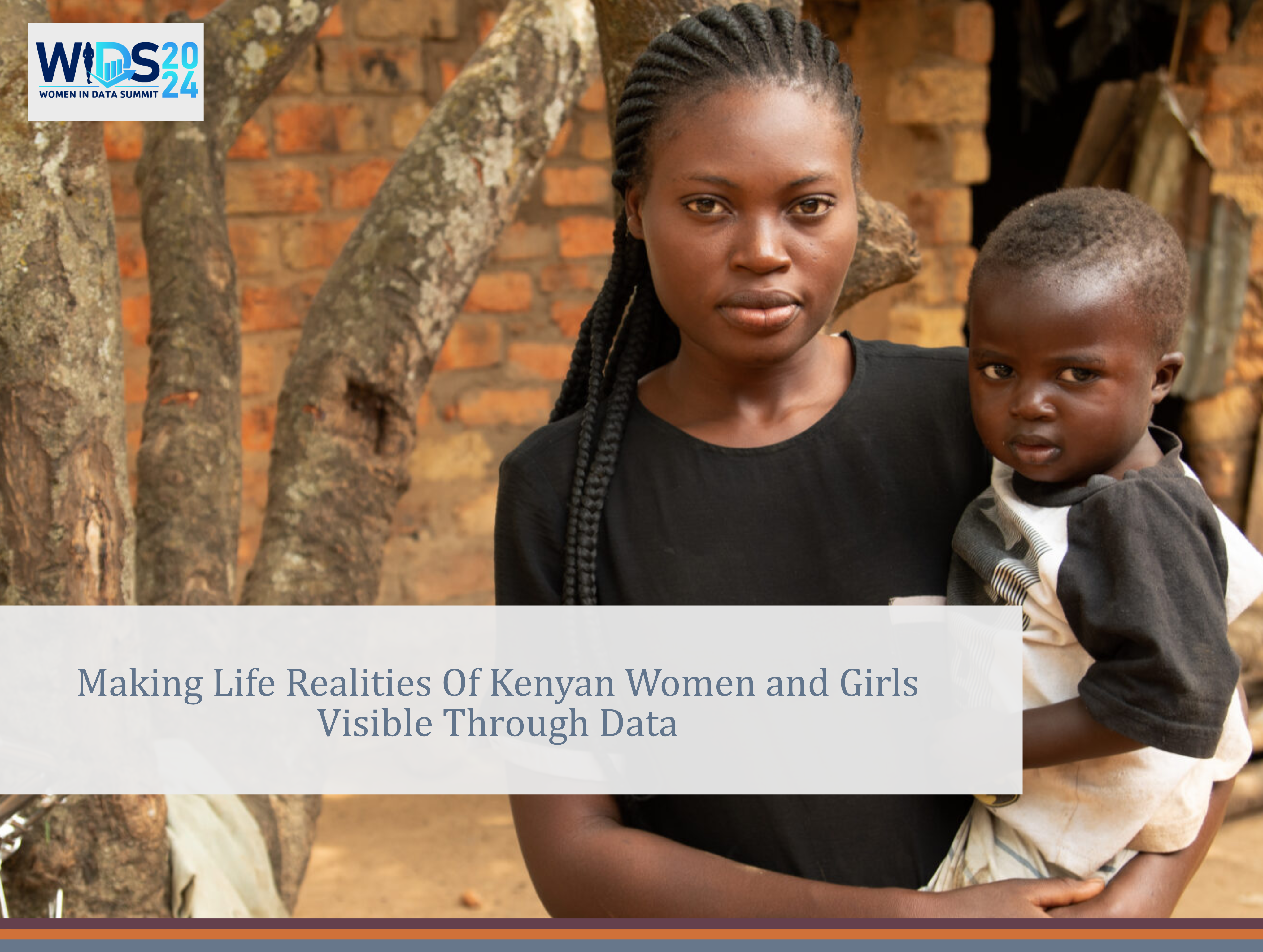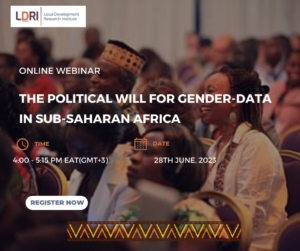![]()
Making Life Realities Of Kenyan Women and Girls Visible Through Data

An old saying goes, “In God we trust, but in everyone else, we need data.” In today’s world, data is more than just numbers—it’s a powerful tool that shapes developmental outcomes and drives decision-making at every level. The need for accurate and comprehensive information on the challenges and realities faced by different populations is more critical than ever. However, according to the recently published report on Building Political Will for Gender Data, data on women and girls remains incomplete, irregularly produced, and chronically underfinanced around the world. Marginalized communities, particularly women and girls, are often left invisible in the data landscape, and as a result, they continue to bear the brunt of unequal developmental outcomes.
In Kenya, a country where women and girls make up more than half of the population, data disparity is not just a statistic; it’s a lived reality that hinders progress toward gender equality and social justice. The recently released United States Agency for International Development (USAID) report on Preventing Child and Maternal Deaths 2024 highlights this stark reality, ranking Kenya fourth in Sub-Saharan Africa with 594 deaths per 100,000 live births. Behind these alarming numbers are direct causes such as obstructed labor, postpartum hemorrhage, pre-eclampsia, hypertensive disorders, pregnancy-related infections, and complications from unsafe abortions or pre-existing medical conditions exacerbated by pregnancy. These are compounded by indirect factors like lack of education, cultural constraints, poverty, and inadequate infrastructure—collectively known as the four delays: delays in seeking care, delays in reaching a healthcare facility, delays in receiving adequate care, and delays in referral to appropriate care.
Gender data is essential for understanding the reasons behind these numbers and taking appropriate measures, yet this data is often incomplete, misrepresented, or altogether missing. While it’s clear that maternal health issues predominantly affect women and adolescent girls, we must also consider how data—or the lack of it—impacts women in other sectors. For instance, is gender-inclusive data used when deciding whether a road should be well-lit? Do decision-makers consider the ease with which a pregnant woman can travel from her home to the hospital or the safety of a 20-year-old university student walking from campus to her hostel at night? The interconnectedness of these issues across various sectors underscores the critical need for comprehensive gender data that reflects the lived experiences of women and girls. Without it, we are left to navigate blind spots in our understanding, perpetuating inequalities and missed opportunities for true social progress.
But how do we make the lived realities of women and girls visible in data in a way that influences decision-making and drives equitable development outcomes? As the saying goes, “what is not counted doesn’t count.” To ensure that the contributions of women and girls are recognized and valued, it is crucial to collect and analyze data that accurately reflects their daily lives and challenges. The Kenya National Bureau of Statistics (KNBS) has made significant strides in closing this gap by ensuring that women’s unpaid care work is counted—an often overlooked yet vital aspect of economic and social life. Kenya is one of the few countries in Sub-Saharan Africa to have conducted a Time Use Survey, a critical tool that captures the amount of time women and men spend on various activities, including unpaid domestic and paid care work.
According to the 2021 Kenya Time Use Survey, women spend an average of four hours per day on unpaid care work, while men spend only about an hour. This data has been instrumental in shaping the Kenya National Care Policy 2024, making visible the constraints imposed by gendered cultural norms, lack of public services and infrastructure, and insufficient social protection policies. By recognizing, reducing, redistributing, and rewarding unpaid care work, and representing care work more equitably between women and men as well as between households and the state, we can not only close the gap in achieving gender equality but also improve economic outcomes.
These initiatives, along with the Kenya Gender Statistics Framework, are steps in the right direction. However, much more needs to be done to ensure that all data collection efforts are inclusive and that the data is used to drive tangible change. The upcoming Women In Data Summit, scheduled for September 10th-11th, 2024, in Naivasha, Kenya, offers an incredible opportunity for different stakeholders to consolidate efforts in addressing issues such as financing gender data, garnering political will, and strengthening data infrastructure.
As we continue to build momentum toward a data-driven future, it is imperative that the voices and experiences of Kenya’s women and girls are not left behind.




